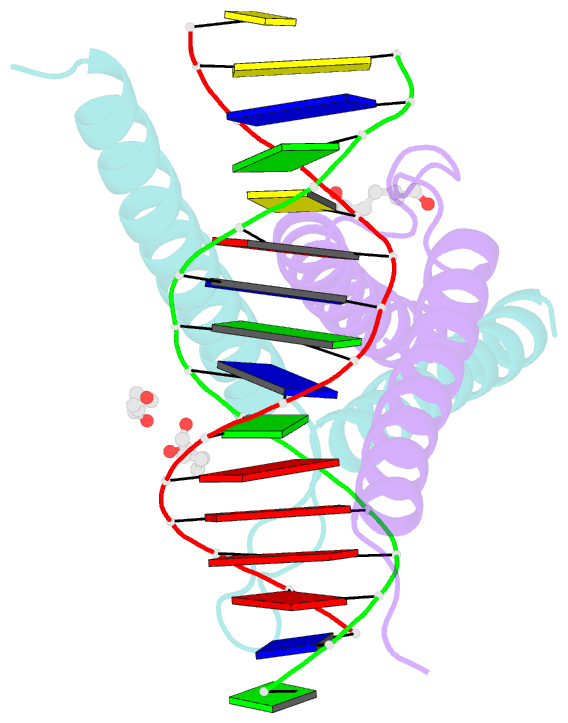Summary information and primary citation
- PDB-id
- 7xq5; SNAP-derived features in text and JSON formats;
DNAproDB
- Class
- transcription
- Method
- X-ray (2.25 Å)
- Summary
- Crystal structure of scino2p-scino4p bound promoter DNA
- Reference
- Khan MH, Xue L, Yue J, Schuller HJ, Zhu Z, Niu L (2022): "Structural Analysis of Ino2p/Ino4p Mutual Interactions and Their Binding Interface with Promoter DNA." Int J Mol Sci, 23. doi: 10.3390/ijms23147600.
- Abstract
- Gene expression is mediated by a series of regulatory proteins, i.e., transcription factors. Under different growth conditions, the transcriptional regulation of structural genes is associated with the recognition of specific regulatory elements (REs) in promoter DNA. The manner by which transcription factors recognize distinctive REs is a key question in structural biology. Previous research has demonstrated that Ino2p/Ino4p heterodimer is associated with the transcriptional regulation of phospholipid biosynthetic genes. Mechanistically, Ino2p/Ino4p could specifically recognize the inositol/choline-responsive element (ICRE), followed by the transcription activation of the phospholipid biosynthetic gene. While the promoter DNA sequence for Ino2p has already been characterized, the structural basis for the mutual interaction between Ino2p/Ino4p and their binding interface with promoter DNA remain relatively unexplored. Here, we have determined the crystalline structure of the Ino2pDBD/Ino4pDBD/DNA ternary complex, which highlights some residues (Ino2pHis12/Glu16/Arg20/Arg44 and Ino4pHis12/Glu16/Arg19/Arg20) associated with the sequence-specific recognition of promoter DNA. Our biochemical analysis showed that mutating these residues could completely abolish protein-DNA interaction. Despite the requirement of Ino2p and Ino4p for interprotein-DNA interaction, both proteins can still interact-even in the absence of DNA. Combined with the structural analysis, our in vitro binding analysis demonstrated that residues (Arg35, Asn65, and Gln69 of Ino2pDBD and Leu59 of Ino4pDBD) are critical for interprotein interactions. Together, these results have led to the conclusion that these residues are critical to establishing interprotein-DNA and protein-DNA mutual interactions.





